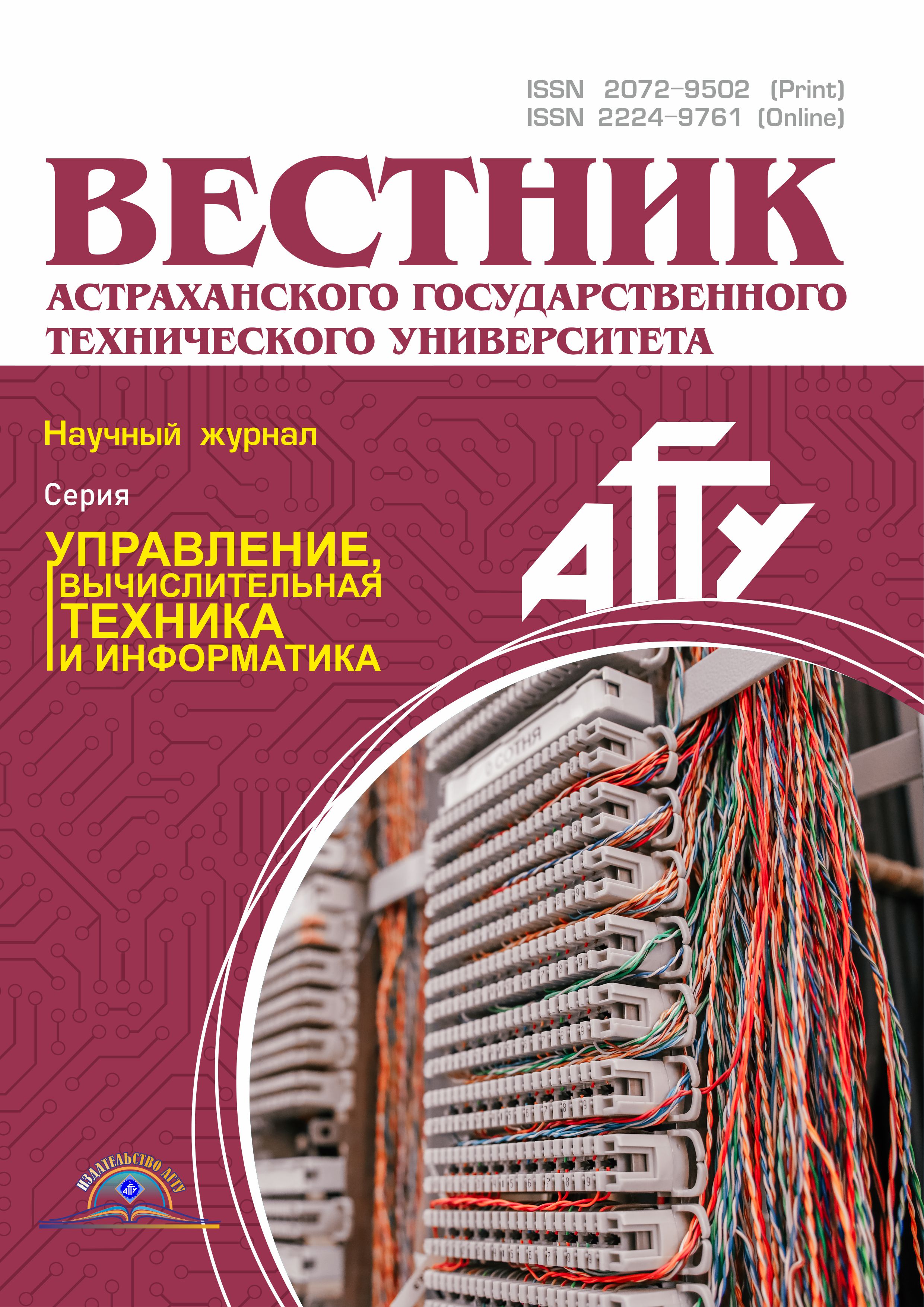VAK Russia 05.13.01
VAK Russia 05.13.06
VAK Russia 05.13.10
VAK Russia 05.13.18
VAK Russia 05.13.19
UDC 519.24
CSCSTI 20.01
CSCSTI 28.01
CSCSTI 49.01
CSCSTI 50.01
CSCSTI 82.01
The article focuses on the approach to forming the structure of a neural network with application of a pre-built algorithm using Petri nets which represent a well-characterized body of mathematics and help to describe algorithms, in particular, distributed asynchronous systems. According to the proposed approach, the model built in Petri nets serves as the basis for further developing the neural network. There was proposed the idea of informal transformation, which makes sense because the structure of Petri net provides substantiation for the structure of the neural network. This fact leads to decreasing the number of training parameters in the neural network (in the example described in the article the decrease was more than twice: from 650 to 254), increasing the time of the network training and getting initial values for the training parameters. It has been stated that with the initial values obtained the training time grows even more and, thus, training process acts as fine-adjusting values of parameters. Transformation can be explained by the fact that both Petri nets and neural networks act as languages for describing functions, and differ only in the case of neural networks, where the presented function must be trained first (or to find parameter values). The above-mentioned approach is illustrated by the example of the problem of automatic formation of a group of unmanned aerial vehicles (UAV) and their movement. In this problem, identical instances of the neural network are located on each UAV and interact in asynchronous mode.
neural networks, Petri nets, classification, structure of neural networks, teaching methods, control of a group of unmanned aerial vehicles, control algorithms
1. Krizhevsky A., Sutskever I., Hinton G. E. ImageNet Classification with Deep Convolutional Neural Networks // Proceedings of Neural Information Processing Systems (NIPS). Nevada, 2012. P. 1097-1105.
2. Graves A., Mohamed A., Hinton G. Speech recognition with deep recurrent neural networks // Proceedings of 38th International Conference on Acoustics, Speech and Signal Processing (ICASSP). Vancouver, IEEE, 2013. P. 6645-6649.
3. Deng L., Hinton G. E., Kingsbury B. New types of deep neural network learning for speech recognition and related applications: An overview // Proceedings of 38th International Conference on Acoustics, Speech and Signal Processing (ICASSP). Vancouver, IEEE, 2013. P. 8599-8603.
4. Mnih V., Kavukcuoglu K., Silver D., Graves A., Antonoglou I., Wierstra D., Riedmiller M. Playing Atari with Deep Reinforcement Learning // Proceedings of Neural Information Processing Systems (NIPS). Nevada, 2013. URL: https://www.cs.toronto.edu/~vmnih/docs/dqn.pdf (data obrascheniya: 12.02.2018).
5. Karpathy A., Fei-Fei L. Deep Visual-Semantic Alignments for Generating Image Descriptions // IEEE Transactions on Pattern Analysis and Machine Intelligence. 2016. Vol. 39. P. 664-676.
6. Srivastava N., Hinton G., Krizhevsky A., Sutskever I., Salakhutdinov R. Dropout: A Simple Way to Prevent Neural Networks from Overfitting // Journal of Machine Learning Research 15. 2014. P. 1929-1958.
7. Mahsereci M., Balles L., Lassner C., Hennig P. Early Stopping without a Validation Set // ArXiv e-prints. May 2017. URL: https://arxiv.org/pdf/1703.09580.pdf (data obrascheniya: 12.02.2018).
8. Merkulov V. I., Milyakov D. A., Samodov I. O. Optimizaciya algoritma gruppovogo upravleniya bespilotnymi letatel'nymi apparatami v sostave lokal'noy seti // Izv. YuFU. Tehnicheskie nauki. 2014. № 12. S. 157-166.
9. Evdokimenkov V. N., Krasil'schikov M. N., Sebryakov G. G. Raspredelennaya intellektual'naya sistema upravleniya gruppoy bespilotnyh letatel'nyh apparatov: arhitektura i programmno-matematicheskoe obespechenie // Izv. YuFU. Tehnicheskie nauki. 2016. № 1. S. 29-44.
10. Gayduk A. R., Kapustyan S. G., D'yachenko A. A., Plaksienko E. A. Avtonomnoe osuschestvlenie missiy BLA // Izv. YuFU. Tehnicheskie nauki. 2017. № 1. S. 87-96.
11. Gayduk A. R., Kapustyan S. G., D'yachenko A. A., Plaksienko E. A. Sistema avtonomnogo upravleniya manevrami BLA. Sistemnyy analiz, upravlenie i obrabotka informacii // Tr. 7-go Mezhdunar. seminara (Rostov-na-Donu, 6- 12 oktyabrya 2016 g.) / pod obsch. red. R. A. Neydorfa. Rostov-na-Donu: DGTU, 2016. S. 210-218.
12. Bishop C. Pattern Recognition and Machine Learning (Information Science and Statistics). New York: Springer-Verlag, 2006. 738 p.
13. Goodfellow I., Bengio Y., Courville A. Deep Learning. MIT Press, 2016. 802 p.
14. Romannikov D. O. O preobrazovanii seti Petri v neyronnuyu set' // Sb. nauch. tr. NGTU. 2016. № 4 (86). S. 98-103.
15. Voevoda A. A., Polubinskiy V. L., Romannikov D. O. Sortirovka massiva celyh chisel s ispol'zovaniem neyronnoy seti // Nauch. vestn. NGTU. 2016. № 2 (63). C. 151-157.
16. Voevoda A. A., Romannikov D. O. Sintez neyronnoy seti dlya resheniya logiko-arifmeticheskih zadach // Tr. SPIIRAN. 2017. Vyp. 54. C. 205-223.
17. Voevoda A. A., Romannikov D. O. A Binary Array Asynchronous Sorting Algorithm with Using Petri Nets // Journal of Physics: Conference Series. 2017. Vol. 803. P. 012178. DOIhttps://doi.org/10.1088/1742-6596/803/1/012178.















